Air conditioner rotation unit: device, connection rules and module settings
Failure of the air conditioner in the office does not entail the termination of staff, right? The situation is completely different with server rooms, where uninterrupted air cooling is necessary. By including a rotation unit for air conditioners in the system, even a short-term excess of the temperature limits is excluded.
This solution prevents the failure of server hardware and creates the conditions for the stable performance of service tasks. We will talk about how to organize a rotation block. We will explain how to reserve air conditioners, tell you how to install and configure the device.
The content of the article:
- Server air temperature indicators
- Purpose and design of the rotation unit
- Air Conditioning Redundancy Schemes
- Features of installation on the example of BURR-1
- The principle of operation of the rotation unit
- How to configure
- Equipment Maintenance
- Factors of choice and additional functionality
- Conclusions and useful video on the topic
Server air temperature indicators
Rotation units are embedded in the air conditioning systems of many laboratories, data centers, and production workshops in high-tech industries. This is an integral element of equipping server rooms, which are available in almost every major organization.
In the age of information technology, even new, developing companies strive to use their own server equipment for processing, storage and exchange of data with partners and customers.
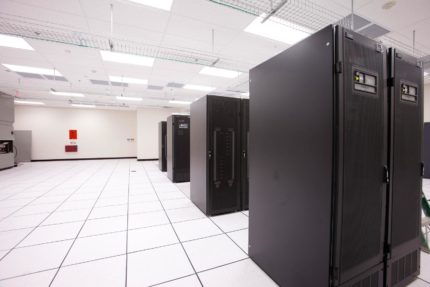
A separate technological room is allocated for server equipment, the so-called server room, where it is necessary to maintain the operating conditions specified in the technical documentation by the manufacturer. In particular, one of the most important parameters is air temperature.
According to the recommendation of the American Society of Heating, Refrigerating and Air-Conditioning Engineers (ASHRAE), the temperature in the server rooms should be between 18 ° C and 27 ° C.Most specialized companies, for example, providing hosting services, do not allow air temperature to rise above 24 ° С.

Such a strict temperature range is due to the operational features of server computers. Local overheating of certain devices included in the server leads to their breakdown. As a result, it comes down to the loss of important information, disruptions in production, commercial, and logistics processes and, as a result, to the loss of reputation and profit.
The modern server is equipped with an internal heat dissipation system. All internal components that produce heat during their operation are cooled. But it is impossible to completely avoid heat transfer due to leaks in the housing. Despite the radiators and even liquid cooling, the temperature inside the case will be close to the ambient temperature.
The following components are most sensitive to climatic conditions of use:
- CPU;
- HDD;
- RAM.
With increasing temperature, there is an expansion of the materials from which the components of the hard drive are made. This leads to the failure of magnetic disks, heads, positioning systems. Problems with the hard drive are fraught with the loss of important information.
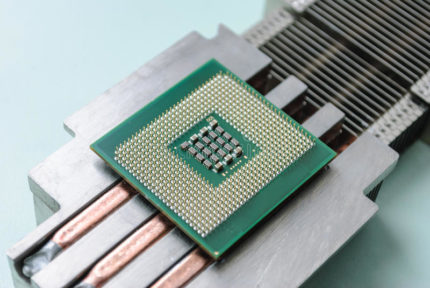
In modern servers, operational memory devices are installed, equipped with their own passive cooling system (radiators). But this does not change the situation. Radiators can save RAM only with a very short and slight increase in temperature. But with a stronger heating of the air, they are ineffective.
The processor protection system automatically responds to overheating, which leads to a server shutdown and the impossibility of its normal, uninterrupted operation. Many microchips do not tolerate high temperature, in particular, on the south and north bridges.
You should not expect that if the outdoor (outdoor) temperature is in an acceptable range, you can refuse to cool the air in the server room. It is necessary to consider all indicators of heat release and heat influx. Thus, the thermal power of servers is 80-90% of the consumed electrical power and often exceeds 1 kW.
So, the use of expensive and important equipment for solving business problems that is sensitive to temperature rises and fluctuations requires properly organized air conditioning, in which each split system should work smoothly.
Purpose and design of the rotation unit
The organization of the cooling system by installing not only basic, but also spare, backup, air conditioners alone does not save the situation.
It is necessary to coordinate the operation of all devices in such a way that under any conditions the temperature in the room remains stable. For this purpose, specialized complexes are used, which are often called simply coordinators.
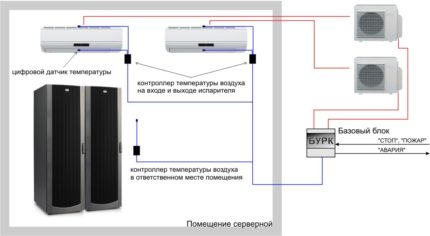
The standard complex includes a control unit and executive units. Together, they perform the following basic functions:
- control over the system;
- switching air conditioners in case of breakdowns;
- ensuring alternate functioning;
- uniform distribution of working hours.
A reliable server air conditioning system consists of at least two air conditioners: a primary and a backup. Each of them, according to its technical characteristics, should be able to maintain the necessary temperature conditions in the server room.
If one air conditioner breaks down, the rotation unit promptly turns on the second, serviceable, unit. When performing this function, temperature sensors are used that measure the temperature and react to its slightest increase. The backup function helps not only in emergency situations, but also, for example, during scheduled maintenance and repair of air conditioners.
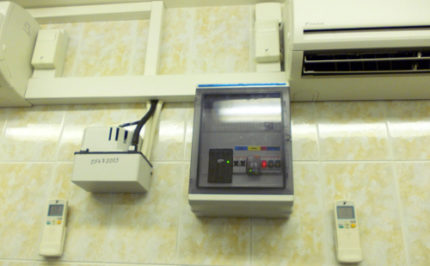
The implementation of this solution allows you to change filters, charge air conditioners with refrigerant, perform more complex operations at any convenient time, while continuing to maintain the optimal microclimate in the server room.
The rotation unit also provides alternate operation. air conditioners and split systems and as a result, the cumulative time of their work is approximately the same. As a result, the overhaul period and the operational life of the cooling equipment are extended.
Air Conditioning Redundancy Schemes
It is possible to implement various redundancy schemes, which are conventionally designated as N + 1 and 2N, where N is the number of air conditioners that perform a similar function in the system (from English “Need” - “Necessity”).
The simplest scheme, involving the use of only one backup air conditioner, is N + 1. If the rotation system is not configured, the backup air conditioner is switched on only in emergency cases and takes on the entire load.
The system can have several main working air conditioners and each of them has a backup air conditioner, which is designated as 2N and means 100% redundancy. It is clear that the more backup air conditioners, the higher the fault tolerance of the system.
Features of installation on the example of BURR-1
We will show how installation is done using a specific example. In Russia, the BURR-1 rotation and backup control units are widely used, working in conjunction with the specialized executive units BIS-1. The number of actuators can vary depending on the total number of air conditioners in the system.
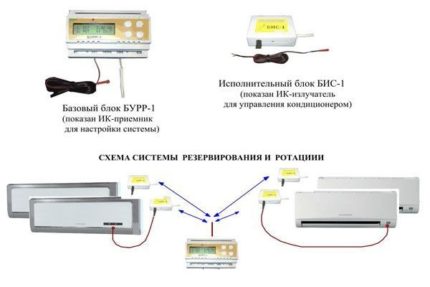
In addition to the device, a BURR-1 package includes a temperature sensor. Executive blocks are purchased for each air conditioner. They are equipped with an IR probe and a double-sided self-adhesive gasket for fixing it. A temperature sensor is purchased separately.
Note that the configuration of the coordinators depends on the manufacturing plant and often includes all the necessary set of temperature sensors and auxiliary accessories.
Before starting installation work, the equipment is de-energized, other safety requirements are observed.
BURR-1 has a plastic case, convenient for installation on a special metal profile - a DIN rail, which is placed on the electrical panel, next to the circuit breakers. A 3.5 cm DIN rail is suitable for this purpose.
BIS-1 is installed above the air conditioner or directly on the air conditioner case with fixation on a self-adhesive double-sided gasket. A temperature sensor is fixed in the entrance area of the guide louvers. It is here that he will be able to catch the flow of cold air and determine that the air conditioner is in working condition.
Also, the system requires one common remote temperature sensor, which is installed in the holder on the wall in the server room at an equal distance from the air conditioners. This sensor should not be affected by external heat, for example, coming from heating radiators.
If it is possible to arrange electrical wiring, the BURR-1 control unit can be installed outside the switchboard, for example, on a wall or even in an adjacent room.
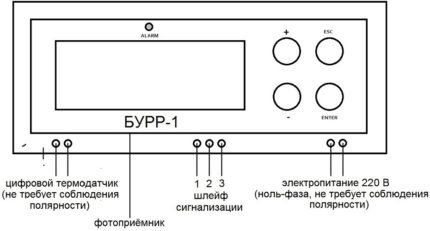
The probe of the emitter is installed in such a way that it "looks" into the photodetector of the air conditioner from a distance of not more than 10 cm with an allowable deflection angle of 45-60 degrees.
The transmission range of a stable radio signal is 50 meters. That is, this is the maximum distance between the main and executive units. It is desirable to reduce it in order to reduce the level of interference from third-party equipment.
The following installation features should be highlighted:
- lack of cable lines;
- the ability to expand the system;
- implementation of various redundancy schemes.
When connecting the air conditioning rotation unit, you don’t have to stretch the cable to transmit control signals, which, among other things, saves space in the server room. The composition of the air conditioning system is variable.
It can include a different number of air conditioners, differing in their power. Developing and increasing the equipment of the server room, the company, as necessary, can include new air conditioners in the system (up to 15 devices in total).
The principle of operation of the rotation unit
In the process of working with BURR-1, through radio signals at a frequency of 433 MHz, commands are sent to the executive units, which turn on and off the air conditioners using infrared emitters, in accordance with the settings. Air conditioners should be equipped with photodetectors. This requirement is met by most modern models, including domestic ones.
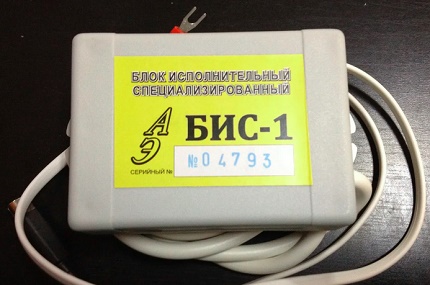
Thermal sensors are continuously monitored. By comparing the data obtained, the condition of each air conditioner is determined. If the air conditioner is turned on, and the sensor installed on its blinds indicates that the temperature change at the output is less than 2 C, standby powers are turned on and an alarm signal is given.
How to configure
Based on the settings of the rotation control module set by the user, the air conditioners are turned on and off. In this case, a certain sequence and specified time intervals are observed.
To enter the control unit settings menu, press “Enter”. If the settings change during operation, at the moment of pressing this button, the unit can transmit commands according to the previously specified protocol. In this case, you will have to wait a bit while continuing to press Enter.
Settings menu items are grouped into several groups, including registration of executive units, time and temperature parameters. Information about the operation of the system is displayed on the display of the control unit. It is presented in the form of clearly formulated phrases and conventions. On the display you can see the type of command being transmitted and its current status, which facilitates the setup and subsequent operation of BURR-1.
Using the control panel, each air conditioner is assigned a number, its purpose is determined. Air conditioners are grouped depending on the purpose: reserve, rotation participants, etc.
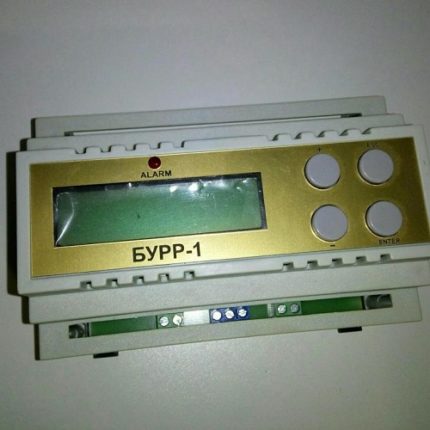
Using the data input panel, the maximum permissible temperature values in the server room, the connection, shutdown, alarm, and time parameters regarding collaboration and rotation are set.
The operating mode of the executing unit is determined by the change in color and flashing frequency located at the bottom of the diode housing. For example, when the executive unit is in normal mode and waiting for a command from the control unit, its LED slowly flashes green.
When such a command is received, a yellow light will turn on for 1-2 seconds. The execution of the power-on command is accompanied by frequent flashing green. If it turns off, the LED lights up in red and also flashes quickly.
Having set the settings and wanting to exit the menu, press the “ESC” button. If you do not press a button for 4 minutes, that is, completely inactive, the output will be performed automatically.
If there is no button press, because a command is being recorded and an IR signal is expected, automatic exit will not occur. Please note that during some operations, pressing “ESC” will cause you to exit the menu in which the changes made to the settings are not saved.
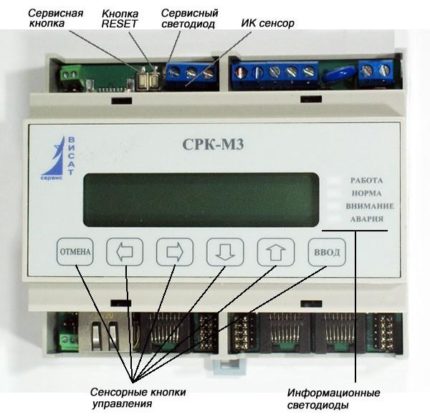
When the unit is in the settings mode, the rotation control is suspended, although all timers work, counting the operating time of each group of air conditioners and the rotation time.
The process of setting up the rotation control module is described in detail in the instructions attached to it.
Equipment Maintenance
To ensure normal operation and a long service life, they regularly perform maintenance on the control and executive units. Every 3-4 months, the reliability of fastening, the quality of the connections, the serviceability of the connectors are checked. The terminal blocks and the outer surfaces of the enclosures must be cleaned of dust as they become dirty, preventing debris and foreign objects from falling on them.
Factors of choice and additional functionality
On the market are different models and modifications of rotation and backup units of air conditioners, which differ among themselves:
- according to characteristics;
- by a set of functions;
- according to the installation method;
- by type of management.
The control signal can be transmitted not only through the infrared channel, as in BURR-1, but also via wires. Options differ in the number of temperature sensors. The sensors themselves can work with one or another error, on which the rotation speed of the rotation unit depends to a certain extent. Also pay attention to the accuracy of the timer. These and other data should be indicated in the accompanying documentation.
When choosing a coordinator, the requirements for the air conditioning system, its composition and configuration are taken into account. So, for air conditioners without photodetectors, you can choose devices with a wired type of control. An important criterion is the functionality of the device.
Today you can purchase rotation units with a wide range of functions. In addition to performing their basic tasks, these devices automatically restart air conditioners, which were discontinued due to lack of power. They do not allow shutting down air conditioners if a person accidentally gives such a command from a remote control.
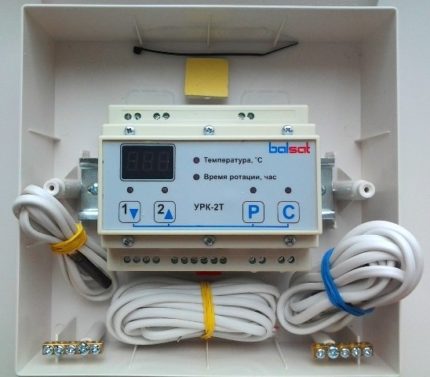
When connecting alarm loops, emergency messages are transmitted. For example, a fire message is sent if the temperature in the server room rises above a certain value (usually at 69 ° C).The signal can be sent to the fire department, it is also possible to alert personnel using SMS.
Events and data from temperature sensors are recorded in non-volatile logs. Remote control via RS485 and Ethernet is provided. Supports Modbus industry communications protocol.
Having become acquainted with the description and technical characteristics of the device, it is worth making sure of the significance of its functionality in order to make a reasonable economically feasible choice.
It should be borne in mind that the uninterrupted cooling depends not only on the backup unit, but also on the air conditioners themselves. The server ones use precision, channel and wall inverter split systems. The latter option is most in demand, since such devices are much cheaper and take up less space.

When choosing a wall-mounted air conditioner, pay attention to the refrigerating capacity, which should correspond to the heat surplus to be neutralized.
The air conditioning system should function in the server room, regardless of the time of year. If the lower limit of the operating temperature of air conditioners is limited to -10 C, low-temperature kits are additionally purchased.
Conclusions and useful video on the topic
Commissioning of an air conditioning system with a coordinator in the server room:
Unpacking and review of the rotation unit for two air conditioners:
For uninterrupted, round-the-clock cooling of the server room and elimination of equipment failures, rotation and backup units are used, which turn air conditioners on and off according to a given algorithm. In the event of a failure or lack of power of one of the air conditioners, the backup immediately switches on. Due to the variable operation, the life of the air conditioners increases.
Please leave comments in the box below. Tell us about your experience in installing and configuring a rotation unit for an air conditioning system. Share useful information and photos on the topic of the article, ask questions.

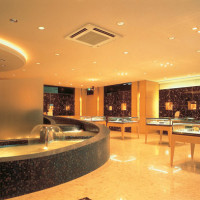 Installation of cassette air conditioners: technological rules for installing a household “cassette”
Installation of cassette air conditioners: technological rules for installing a household “cassette” 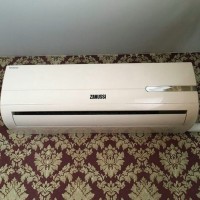 Errors of air conditioners Zanussi: codes of malfunctions and instruction on their elimination
Errors of air conditioners Zanussi: codes of malfunctions and instruction on their elimination 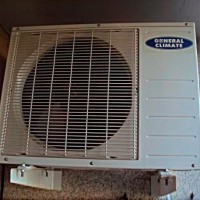 Errors of air conditioners General Climate: decoding of codes and ways to deal with malfunctions
Errors of air conditioners General Climate: decoding of codes and ways to deal with malfunctions  What is a multi split system: principle of operation + installation and connection rules
What is a multi split system: principle of operation + installation and connection rules 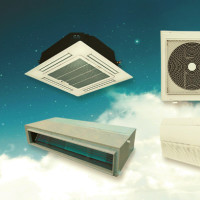 Errors of Vertex conditioners: how to find the violation by the code and correct the situation
Errors of Vertex conditioners: how to find the violation by the code and correct the situation  Errors of Samsung air conditioners: how to detect a malfunction in the code and troubleshoot
Errors of Samsung air conditioners: how to detect a malfunction in the code and troubleshoot  How much does it cost to connect gas to a private house: the price of organizing gas supply
How much does it cost to connect gas to a private house: the price of organizing gas supply  The best washing machines with dryer: model rating and customer tips
The best washing machines with dryer: model rating and customer tips  What is the color temperature of light and the nuances of choosing the temperature of the lamps to suit your needs
What is the color temperature of light and the nuances of choosing the temperature of the lamps to suit your needs  Replacement of a geyser in an apartment: replacement paperwork + basic norms and requirements
Replacement of a geyser in an apartment: replacement paperwork + basic norms and requirements